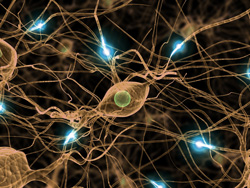Brain researchers think outside the box
A team of European scientists came together to prove a point - well, several points. First, they confirmed what they suspected: that when you cross scientific disciplines like mathematics with neurobiology you get some novel and thought-provoking results. Partners in a European project, called 'Functional connectivity of developing hippocampal networks: characterisation of circuit-hubs’, had a theory about the way networks function. To prove it, they turned to the outside world, rather than microscopes and magnetic imaging, for proof. Their idea was that 'synchronous network events' are dependent on precise connectivity patterns between neurons in the brain. In particular, they tried to establish the existence of so-called 'circuit-hubs' of 'super-connected' cells which transmit information rapidly to developing networks in the hippocampus. And their efforts paid off. 'Our hypothesis was correct and in our project we were able to demonstrate, for the first time, the existence of neuronal hubs,' noted the project partners. Specifically, using sensitive imaging techniques they managed to reconstruct the temporal dynamics of the network to identify the 'hub cells' capable of orchestrating oscillatory activity in a network. They also confirmed that 'hub' neurons are specific cell types (GABAergic cells), which further investigation suggests might be early developed neurons. What's more they showed that brain research benefits from multidisciplinary thinking that bridges mathematics, physics and neurobiology and goes far beyond questions of developmental neurobiology.



